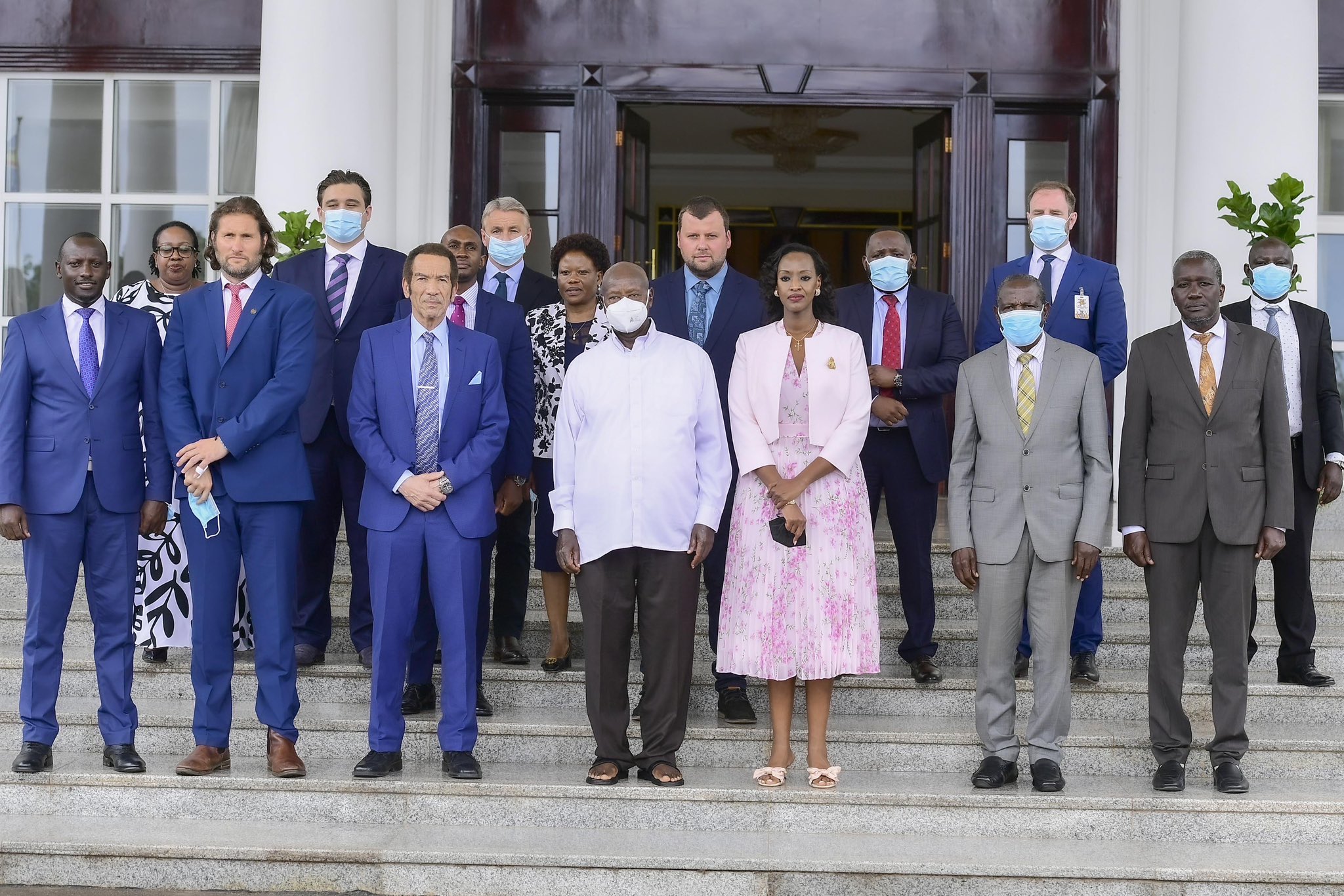Prime
Seeing Africa through the Holderbaum art collection

People admire an art piece during the exhibition at the Xenson Art Space in Kampala. PHOYO/ANDREW KAGGWA
What you need to know:
- On June 16, what was meant to be a celebration of Ambassador Holderbaum’s love for art and a great collection became a celebration of his life.
Anyone who got a chance to meet Ambassador Klaus Holderbaum knew that he was a man who loved art.
From being present at different exhibitions to purchasing artwork, he directly and indirectly helped support—even influence—works produced by human creative skill and imagination in Uganda.
But Klaus, as many people called Ambassador Holderbaum, wasn’t any ordinary person.
He was a diplomat, a foreign and public service officer, and above all, he was the ambassador of Germany to Uganda between 1999 and 2003, before retiring.
Before he was an ambassador in Uganda, Klaus had worked for German missions in Ivory Coast (Abidjan), Zambia (Lusaka), and Mali (Bamako).
Through the different African countries he served, Klaus collected a lot of art in visual form such as paintings, masks, artefacts, and sculptures.
At the beginning of 2023, he mooted the idea of exhibiting his collection. The exhibition took place at the Xenson Art Space from June 17 to July 8.
The exhibition was staged a little over a month after Klaus died at Mulago National Specialised Hospital. He was 84. Born on November 14, 1938, in the German capital, Berlin, Klaus was a lawyer, academician, diplomat, and public servant.
He served in the Germany diplomatic service for 33 years, 22 of which were spent in sub-Saharan Africa.
Uganda was his last post and when he retired in 2003, he made it his retirement home.
Africa love affair
His first African assignment was in Lusaka, Zambia where he served as the deputy head of mission and first secretary from 1974 to 1977.
He returned to the Foreign Service Office in Bonn, a German city that squats on the banks of the Rhine river.
That was in 1977 and he stayed put there working in the Africa Department until 1980.
In 1980, he returned to Africa, serving at the German Embassy in Abidjan, Ivory Coast as the deputy head of mission and counsellor for four years.
He returned to Bonn in 1983 and served in the Political Department as the deputy head of division. Between 1986 and 1991, he was the German ambassador in Bamako.
During his time in sub-Saharan Africa, Klaus felt a strong affection for the visual culture from both native and indigenous Africans. He was captivated by the fact that the diversity in the countries he was posted to had unifying artistic themes. There was for instance a confluence between the Islamic art of West Africa and the Christian art of East Africa.
The exhibition
On June 16, what was meant to be a celebration of Klaus’ love for art and a great collection became a celebration of his life.
In one of his last interviews, Klaus said he never had a criterion for collecting his art; he only had to love it and develop an attachment.
“When I was still the ambassador, I used to tell people that Uganda has a rich culture, and I believed that corporations had to buy many artworks, especially those about the culture that visitors could see,” he said.
Klaus believed Uganda’s rich society had to buy art for the purposes of showcasing what the country has to offer.
Whilst putting together his art collection, Klaus crossed paths with many Ugandan artists. He considered many of them his friends, even when they rarely talked.
He shared their hopes, even anxieties. His collection is a symphony of diverse styles, eras, and cultures.
The collection is carefully curated not to tell a thematic story, but one that transcends time and cultures.
From bold strokes that exude raw passion to delicate brushwork that evokes tranquillity, his collection embodies the entire spectrum of human experiences, specifically African experiences.
The collection
Klaus’ art collection is not merely an accumulation of paintings, sculptures, and installations; it is a reflection of his inner world. Each piece emotionally symbolises a time in his life of diplomacy work that spanned three decades, bearing witness to the myriad of emotions that have coloured his life. Every stroke, every hue, and every texture are testaments to his unwavering devotion to the world of art.
With a keen eye for emerging talent and a penchant for unearthing hidden gems, Klaus’ collection is a fusion of established masters, some of whom were clearly rising stars at the time of collection.
During the exhibition, the walls at Xenson Art Space came alive with the works of renowned artists, whose names echo through the annals of history. There was also the daring experimentation of avant-garde creators who redefine artistic boundaries.
Klaus’ collection not only represents the countries he has been to, but also documents today’s masters by presenting the story before they became the household names they became.
It was exciting, for instance, to see the late Maria Naita’s paintings. For a woman who made her name out of being a sculptor, making monumental works in both Uganda and Rwanda, seeing her works with the brush brought out a side of her most people rarely interact with.
Other celebrated Ugandan artists Klaus collected include George Kyeyune, Eria Nsubuga Sane, Gkwokcho Stephen, Henry Mziri, Amanda Tumusiime, and Fred Mutebi, among others. All these works were produced between 1992 and 2005.
Outside Uganda, Klaus’ collection has works from Bamako, Mali that date as early as 1923. A painting by Gomesse H is the oldest in the pack, having been done in 1842.
The exhibition catalogue detailed that the showcase was intended to help Ugandans understand historical artworks, their influence on society, and their collective social, cultural, and political context.




